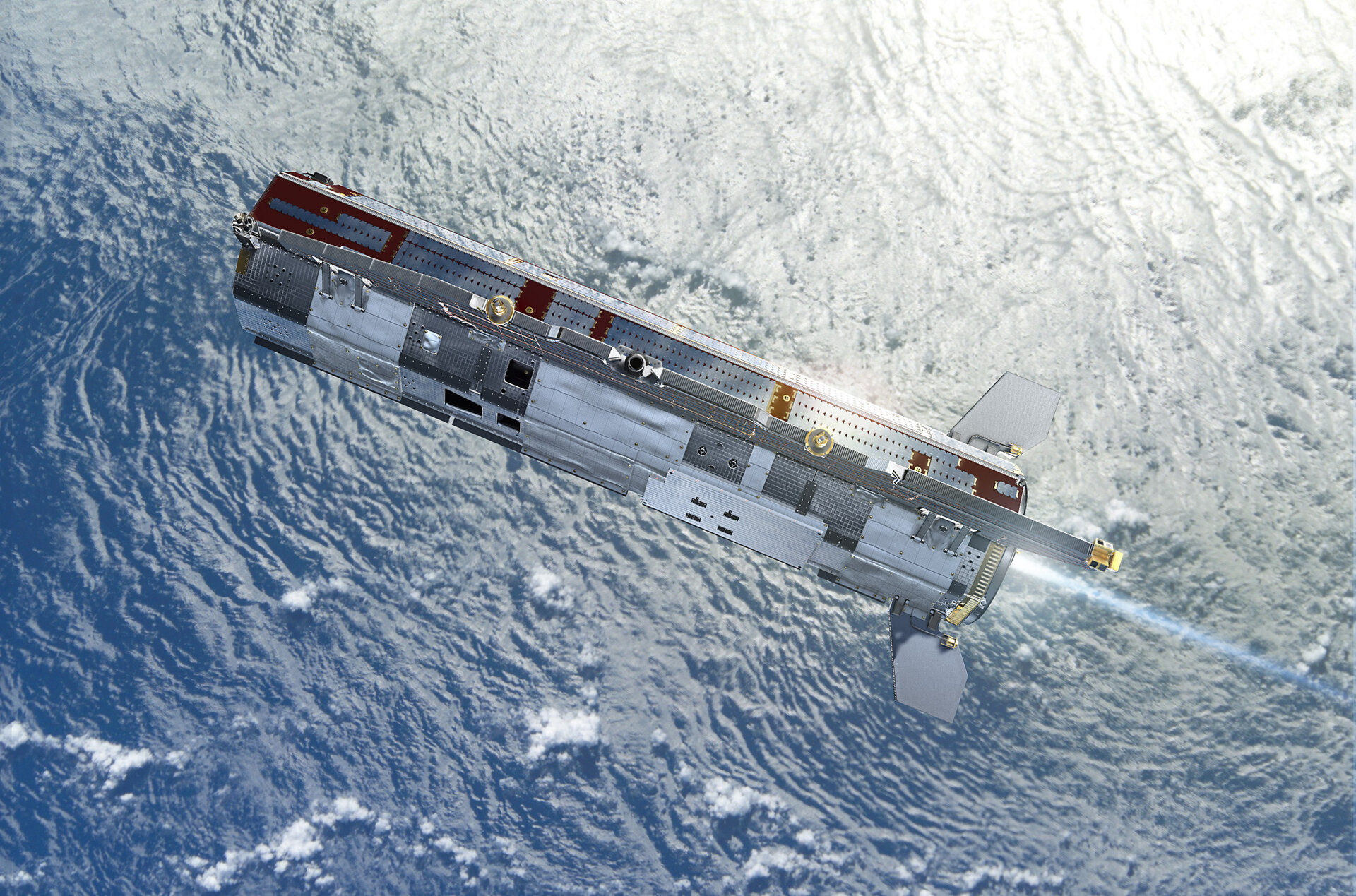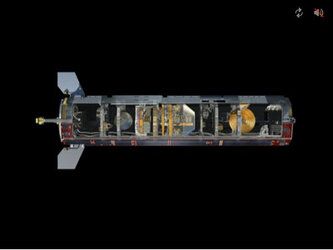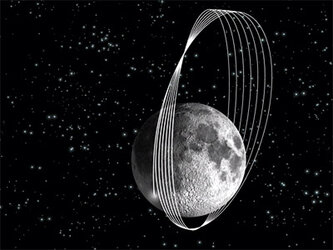ESA's low-flying gravity-detector was weighty technology challenge
Styled like a silvery dart with aerodynamic fins, ESA's Gravity field and steady state Ocean Circulation Explorer (GOCE) mission looks unlike any other satellite in space. Mission Manager Rune Floberghagen confirms that is indeed the case.
"There are very few off the shelf items on this satellite," explains the Norwegian-born ESA engineer. "In particular, everything we'll be doing in science mode all comes from new technology." This is due to GOCE's unprecedented mission – to chart Earth's gravity field to an order of magnitude more detail than any previous gravity map.
GOCE was launched on 17 March and is currently progressing through the commissioning phase, after which its operational life begins. Floberghagen is responsible for ensuring that the gravity data is delivered to scientists worldwide. Yet his original involvement came at the decade's start, as part of the team responsible for the satellite development. The experience gives him a close insight into the mission's challenges.
"Gravity is special in the sense that you really need to fly as close as possible to Mother Earth, the source of the signal you might say," Floberghagen adds. "Ideally we would have liked our satellite to fly just above ground level, but for obvious practical reasons that was not possible! So our compromise was 250 km."
Low altitude demands high performance
Adopting such a low altitude presented problems. Some spy satellites adopted lower orbits, but only for a few weeks or months, not as long as GOCE's anticipated life of 24 months.
"The residual air at this altitude causes the orbit of a standard satellite to decay very rapidly, which would be the end of our mission," Floberghagen says. "So we need our drag-free attitude control system on board to compensate for this atmospheric drag in real time. It tells a xenon ion engine how much air drag we are experiencing so the engine fires to nullify its effect.
"This is a real first. You might have heard of other missions using advanced electric propulsion technology, like ESA's SMART-1 that went to the Moon, but these were systems where you switch on the engine and let it work for a while. In our case we constantly modulate the thrust as the air drag changes.
"So our two engine thrusters, which have now been turned on for testing, are reacting at a rate of around ten times per second. We need this to maintain the spacecraft at the same altitude, but also for another subtle factor: the system ensures the on board sensors are flying as though they are on a gravity-only trajectory, as if in pure freefall, so they pick up readings of gravity only and not disturbing effects due to other forces."
The stiffest satellite ever
GOCE's low orbit also brought further engineering complications. For about four and a half months of the year GOCE will experience brief periods when it crosses into darkness. Such 'eclipses' only last a maximum 28 minutes per orbit but bring about a rapid temperature shifts – in the order of 300K.
"This thermal variation could cause part of the satellite to deform slightly," Floberghagen adds. "We have built the satellite to be rigid and stiff with a low coefficient of thermal expansion, but we cannot guarantee it will be as stable as diamond." Rather than actually employing diamond, the GOCE project team qualified a new technology instead: "We used carbon-carbon technology, which is carbon honeycomb panels that are bonded with hardened carbon fibre cloth. To our knowledge, we have the largest panels ever built of this material, which will keep the accelerometers at the heart of the satellite stable.
"If the instrument were to move, the readings would be instantly perturbed. The stability we need is about a picometre over a period of three minutes or so, which is just 1% of an Angstorm or average atomic diameter."
Nobody can even measure such a small unit as a picometre, which throws up a fundamental question – how do you test and qualify such technology? "We use the most precise machinery we can think of, but then we still have to make some assumptions," Floberghagen answers. "Usually we assume it behaves in a linear way, meaning we apply much larger temperature differentials than expected so you actually get a deformation that is in the measurable range, then scale it down – this is the only thing we can do.
"GOCE is one of the clearest examples so far of how instrumentation is becoming so complex so that you are simply not able to test it on the ground. If the instrument doesn't work perfectly in a 1G environment but only in zero G there are limits to what we can do. It shows how many of these Earth Explorers and other fundamental physics missions must still be considered experiments."
Sampling gravity
GOCE's gravity-detecting sensor is known as a gradiometer, which was switched on just over a week ago. Incorporating a set of accelerometers 100 times more sensitive than any previously flown, it was two decades in the making. "That doesn't mean developing a flight model was a straightforward process," Floberghagen explains. "The pre-development activities helped the mission be to be selected as an Earth Explorer mission as part of the ESA's Living Planet Programme, as did very strong support from the scientific community."
Beyond GOCE
GOCE's data products that Floberghagen is looking forward to bringing to scientists will enable investigation into a wide variety of geophysical processes. The new technology underpinning GOCE also opens up possibilities for missions to follow, operating routinely at lower altitudes.
Fundamental physics missions should also benefit from GOCE's demonstration of a successful drag-free and attitude control system. These include ESA's next-decade LISA Pathfinder and LISA missions, planned to fly in more distant orbits to study gravitational waves.
More information
Rune.Floberghagen @ esa.int






